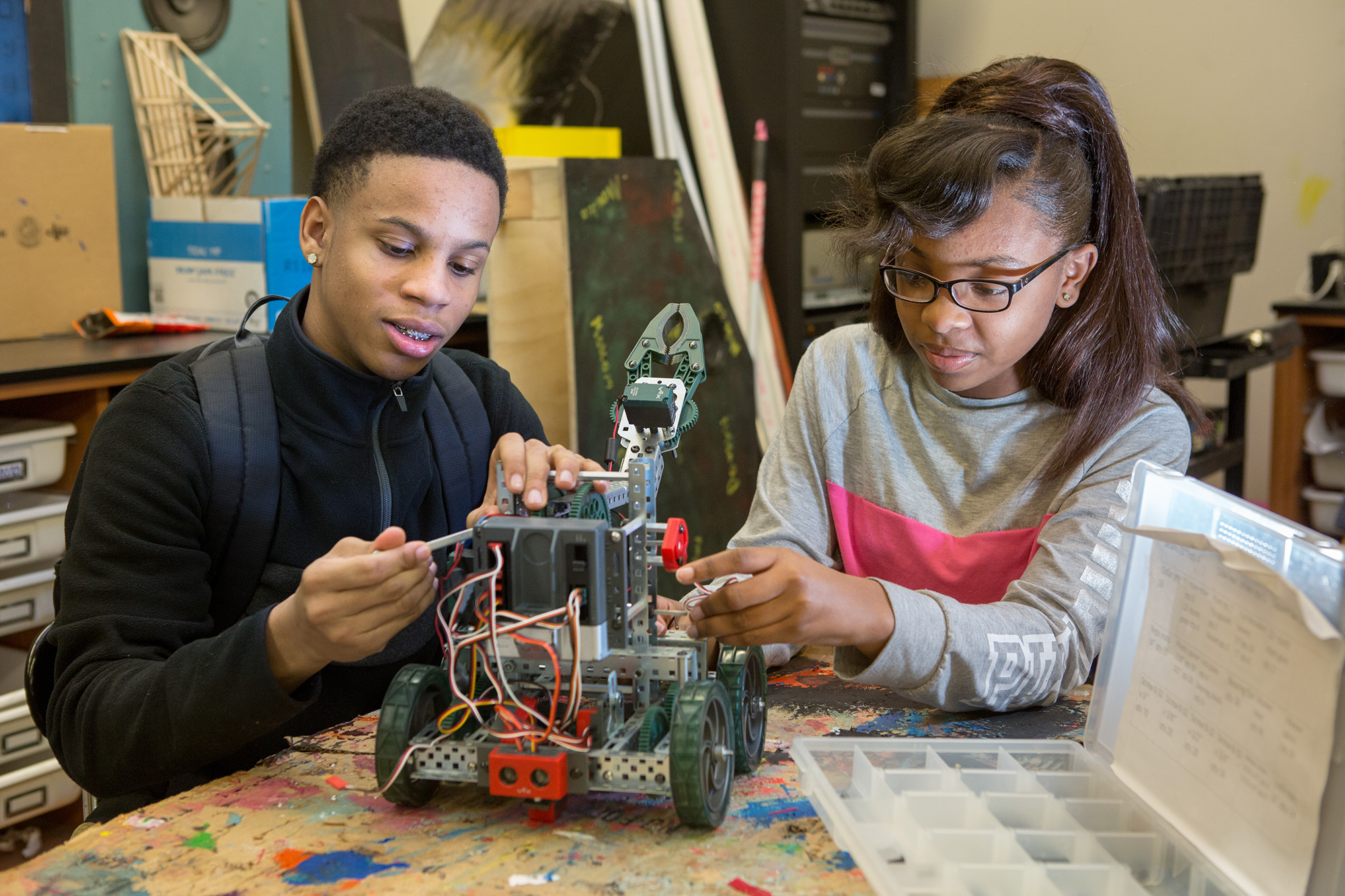Raising the Bar is the Right Move for Students

What happens when you set the bar high for all students? They rise to the occasion.
A high school’s “academic intensity” is the most important factor in whether or not students go on to complete college, the New York Times recently reported.
The article, “A School Where Raising the Bar Lifts Hope,” takes a close look at John R. Rogers High School in Spokane, WA where educators and administrators, like Lori Wyborney, are turning that research into action by making high school more challenging.
“The harder classes don’t just prepare students academically. They help students visualize themselves at college,” Wyborney said. “For kids in poverty, more often than not, what they’re saying is, ‘I’m not a good student,’ ” she said. “What we have to do is convince them, ‘Well, actually, you are.’ ”
Seventy-eight percent of the high school’s students qualify for free or reduced lunch, which indicates a high level of poverty for a district. And until the recent focus on setting the bar equally high for all students, they had the lowest college going rate. But the focus on helping every student select the appropriate college-ready courses has improved their graduation and college-going rate dramatically.
Students feel inspired by the attitude that all students were expected to rise to the occasion and would inevitably persevere. “It was the way [the principal] talked to us, like we actually had a chance…There wasn’t any doubt in her voice,” one student explained.
To many of us who believe in the value of setting high standards for all students, regardless or family income, or zip code, this story sounds familiar.
“High standards have changed the way my students think about themselves,” shared Stephanie Barnett in a recent blog post for Educators for High Standards:
“High standards will help them have a chance to score well on the ACT. High standards will help them be accepted into colleges and receive scholarships or grants to help them pay. High standards are the key for my students achieving more than what their current lives tell them they can be.”
“My students deserve the highest quality of education possible. As a teacher, I know that I must hold my students to the high standards so that they have a chance to do whatever they want with their lives.”
Kentucky teacher Sarah Yost also believes that setting high standards for all students helped her become a better teacher:
“As a teacher of low-income, inner-city students, the adoption of [high] standards in Kentucky marked a transformation for me and my students. I always believed that every child could — and should — learn and achieve at high levels; the standards challenged me to prove it.”
“Before the standards, I wanted to shelter lower-performing students from the pain of intellectual struggle. Today… I know that without that struggle there can be no growth; and I’ll be there to support my students all the way to mastery.”
Challenging and consistent standards ensure all students have expectations that fully prepare them to succeed at high levels of learning – regardless of where they grow up or what circumstances they face.
If they hope to provide all students an equal opportunity to succeed, districts, schools, and teachers must continue to raise the bar for all kids.

A former teacher, Katrina Boone is the Director of Teacher Outreach at the Collaborative for Student Success, and the Director of Educators for High Standards.
About the Collaborative for Student Success
At our core, we believe leaders at all levels have a role to play in ensuring success for K-12 students. From ensuring schools and teachers are equipped with the best materials to spotlighting the innovative and bold ways federal recovery dollars are being used to drive needed changes, the Collaborative for Student Success aims to inform and amplify policies making a difference for students and families.
To recover from the most disruptive event in the history of American public schools, states and districts are leveraging unprecedented resources to make sure classrooms are safe for learning, providing students and teachers with the high-quality instructional materials they deserve, and are rethinking how best to measure learning so supports are targeted where they’re needed most.

